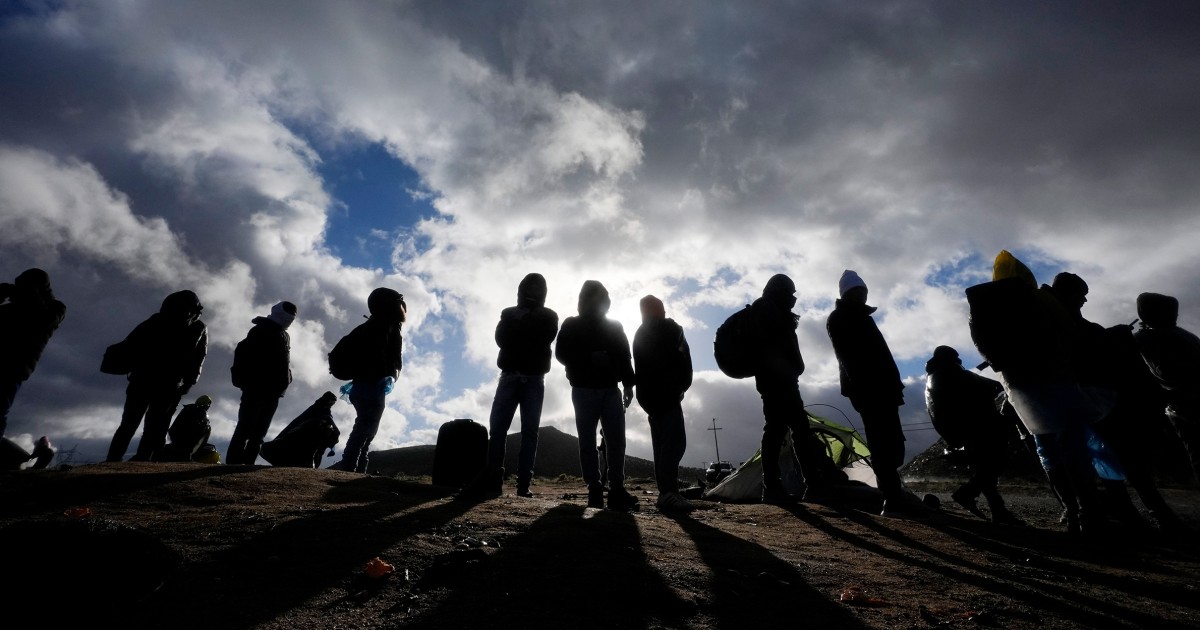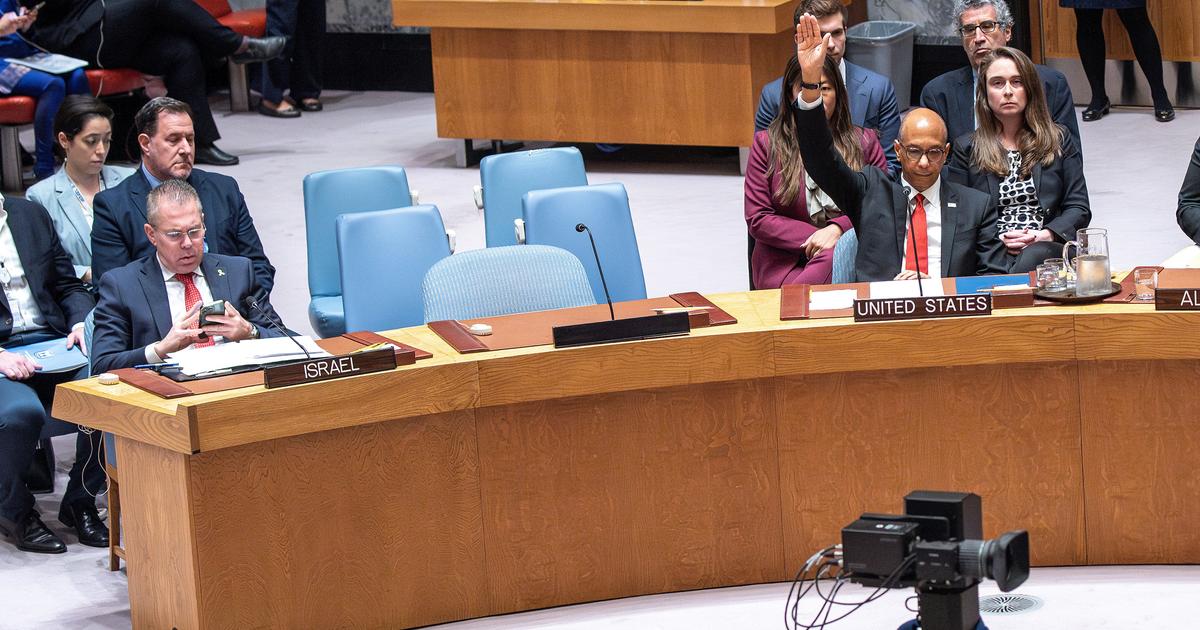By Suzanne Gamboa - NBC News
Ray Cisneros never wanted to marry or be a father, but three years ago he fell in love, got married and became a stepfather.
To give his new family a better life,
Cisneros started his own graphic design business
.
He had planned a big year for his loved ones in 2020, including taking the kids to baseball games.
But
2020 was the year that COVID-19 killed him
.
He was 35 when he died on July 27.
The coronavirus also wiped out his aunt and grandfather.
"In a matter of three weeks, we lost them all," said his sister, Tina Cisneros, "sometimes it is difficult to understand that all this has happened."
COVID-19 has affected the lives of Latinos for most of the year, striking with its poison and killing.
[Follow our coverage of the coronavirus pandemic]
The pain, depression and economic blow to the Cisneros family and the consequences for their children is just one of the thousands of stories that have been repeated this year in many families.
Tina Cisneros with her brother Ray Cisneros, who had recently married and became a stepfather to his wife's children.Courtesy Cisneros Family-NBC News
As of December 23,
COVID-19 had killed more than 54,000 Latinos
, according to the Centers for Disease Control and Prevention (CDC), which acknowledges that its figures are incomplete.
The coronavirus took advantage of the gaps of many Latinos compared to white Americans in income, education and access to health care, including fewer doctor visits to treat diabetes, hypertension and higher rates of obesity, while having less savings and less wealth, as well as limited business capital.
The virus advanced among Latinos because many of them do not have jobs that they can do from home, as well as because of language barriers.
"The only state where Latinos are not overrepresented in cases and deaths is New Mexico, and that's because Native Americans have been hit hard," said Gabriel Sánchez, director of the Center for Social Policy at the University of New Mexico. , earlier this month.
By the end of December, Latinos in that state, who make up 49% of the population, accounted for 55% of coronavirus cases and 37% of deaths, according to tracking by Johns Hopkins University and Medicine.
[USA. begins to apply new restrictions to travelers from the United Kingdom as Fauci warns that "the darkest days" are ahead]
Taking advantage of the gaps, COVID-19 broke the foundations of family and work and brought down the progress that many Hispanics had made toward a better financial situation.
A mortal blow to young Latinos
"It's been a hellish, hellish year," said Rogelio Sáenz, a demography professor at the University of Texas at San Antonio, who helped sketch the true picture of the destruction that COVID-19 was causing and which was later confirmed. by the CDC numbers.
"Once you adjust for age, it is clear that Latinos were dying at rates more than three times higher than the white population," Saenz said.
"Texas remains the only state where more than half of the people who have died from COVID-19 are Latino."
An even more shocking reality is that
COVID-19 has killed a higher proportion of the youngest Latino population
than other groups, based on state race and ethnicity figures.
Latinos have the highest proportion of deaths in age groups under 54, according to CDC data, while among whites, the highest proportion of deaths has occurred in age groups over 65.
[When the $ 600 check will arrive, who qualifies, and what additional assistance does the relief package signed by Trump include]
Among citizens in Ray Cisneros' age group, 35-44, nearly half (48.9%) of those who died were Latino, compared with 27.3% of blacks and 15.5% of whites, according to with an analysis of 226,240 deaths using data from the CDC.
In contrast,
in the 65-74 age group, 45.3% of those killed by COVID-19 were white
, 24.7% black, and 23.1% Latino.
The horror of COVID-19 taking away young and working-age adults was vivid early in the pandemic, when meat plant workers, whose safety has been an issue for decades, fell ill and died, forcing to recognize that Latinos have a broad presence in "essential" jobs in service industries, farm work, grocery stores and more.
Economic and educational benefits, after COVID
The deaths and cases have deteriorated the living conditions of many Latinos.
Ray's wife, Matilda Cisneros, struggles to pay the medical bills for his hospitalization in addition to his other bills.
She traded in a nice apartment she had with her husband for a smaller, more affordable one.
[Donald Trump signs the $ 900 billion aid package that includes checks for $ 600 after refusing for days to do so]
To help Matilda pay for Ray's funeral and burial, Tina set up a GoFundMe account, using the generosity of friends and family and others who made donations.
Before the COVID-19 hit,
Latinos had recovered from the economic hit of the Great Recession
.
From 2016 to 2019, the income of Latino and black families grew faster than that of other groups, although they were still a long way from catching up with white families, whose median household income was $ 188,200 last year, compared to 36,100 of Hispanics and 24,100 of Blacks.
Before the pandemic,
Latino unemployment was 4%
, but then soared to 19% in April.
It fell again to 8.4% in November, but it is still double the pre-pandemic rate.
Latino businesses were the engine that fueled the growth of small businesses, and some had been adding jobs until the pandemic hit.
Now, more jobs have been lost in various industrial sectors with disproportionately higher rates from Latino-owned businesses, such as food services, than in the private sector as a whole, according to the Urban Institute.
Dizziness, memory loss, headaches: a nurse who had COVID-19 tells the consequences that she still lives months later
Dec. 28, 202002: 06
"The housing market, higher education and the rise of women in the workforce were driven by Latinos," Saenz said,
"the devastation we're seeing today will set us back
in terms of many of those gains that we had made." .
Katia Paz-Goldfarb, assistant vice president for Hispanic service initiatives at Montclair State University in New Jersey, is measuring the long-term impact of coronavirus on Latinos in Connecticut, New Jersey, and New York, using research from 30 colleges and universities serving Hispanics.
"It is a loss of what we have been achieving all these past years, in terms of pushing our community to higher education, to opportunities to improve with social mobilization," said Paz-Goldfarb, "what we are seeing now is a regression to a place we were a few years ago. "
Last year,
18.8% of Hispanics over the age of 25 had college degrees
, according to the Census Bureau, an improvement from 13.9% in 2010. However, that proportion is well below 40% of whites with college degrees, compared to 33% a decade ago.
[Chinese journalist who reported the chaos and mistakes in the early days of the Wuhan pandemic sentenced to prison]
Meanwhile, studies show that Black and Latino K-12 children in high-poverty schools fare worse than their white counterparts during the pandemic after having spent much of the school year learning at home, if they could go online.
The proportion of Latino children in the nation's public schools rose to 27% in 2017
.
An attention call
San Antonio City Councilwoman Adriana Rocha García knew early on that the coronavirus would heavily affect residents of her district, whose zip code has the second-highest poverty rate in the city.
A report reveals that 63% of Latinos are willing to get vaccinated against the coronavirus
Dec. 11, 202002: 11
He struggled to find ways to protect the residents of his district, many of them without Internet access and who worked in the hospitality industry.
Meanwhile, COVID-19 touched his family and killed six of his cousins who lived in San Antonio.
All were under the age of 60.
At one point,
14 of Garcia's family members were in the hospital.
"My father thought that all the members of his family were going to die," he said.
Now, Garcia is focused on bringing hope to her community, facilitating mobilization to ensure everyone is vaccinated.
["Vaccines for all": Pope Francis asks for solidarity with those most affected by the pandemic]
Latinos and blacks are more hopeful
after the last presidential election, according to a recent Pew Research Center poll.
But even as vaccines begin to be distributed and a new administration takes the helm, the greatest impact of COVID-19 will not be in the short term, according to Paz-Goldfarb.
"The Latino community is not going to get back to normal," he said.
Sánchez, from the University of New Mexico, said that if there is a shred of hope, it is that the United States has seen the consequences of large groups of the population not having access to basic needs, such as health care and the internet.
That will have to be resolved for
a full economic recovery
, he added.
Ray Cisneros was always supportive of his sister Tina's plans to go to law school, which she still wants to do.
Her brother's death has prompted her to seek counseling, something that was out of the family's plans.
She and other relatives are trying harder and taking steps to stay healthier.
["There has been no other case like it": a 3-year-old boy suffered a stroke after being diagnosed with COVID-19]
The year was a curse, yes, but 2020 was also a wake-up call, he said.
"It made me realize all the things that I took for granted," Cisneros said, "even the hugs, you know, being close to my family."














